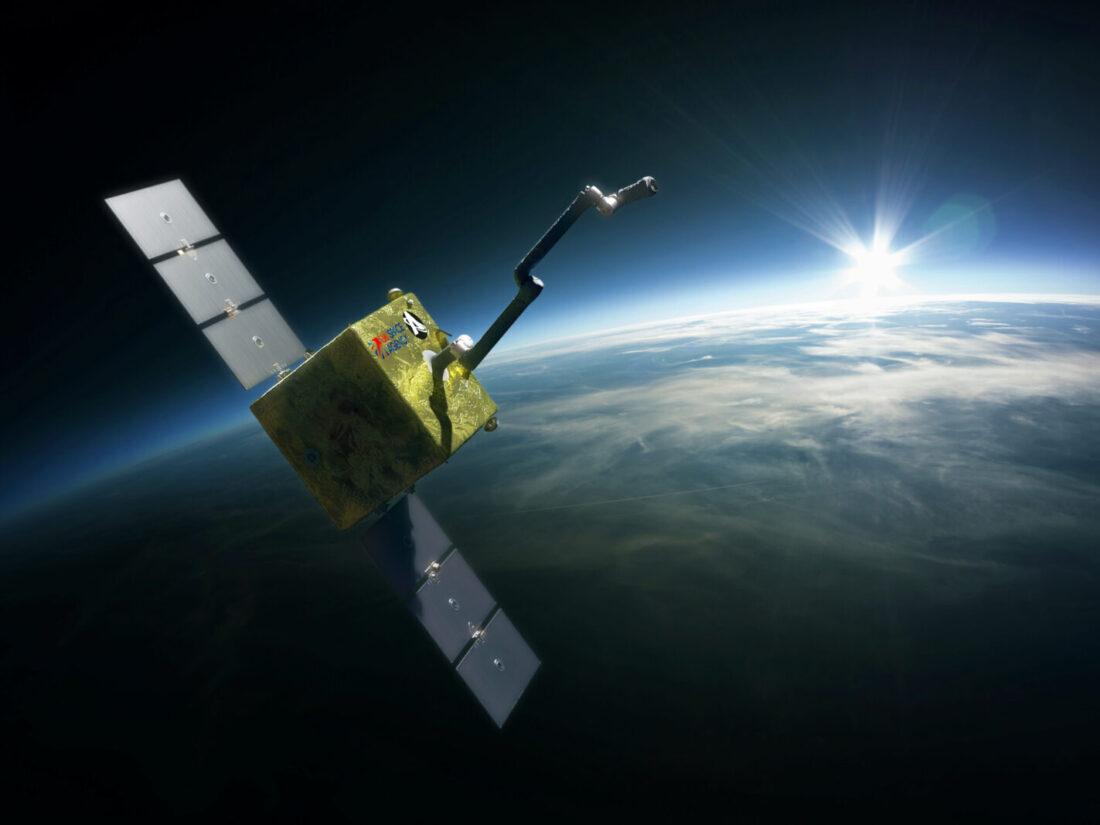13.10.2023

An artistic depiction of the spacecraft Astroscale intends to use to de-orbit two LEO satellites. Credit: Astroscale
TAMPA, Fla. — The two contenders hoping the U.K. chooses them to de-orbit a pair of derelict satellites in 2026 with a single robotic spacecraft have finished the system requirements review for their mission.
The British subsidiary of Japan’s Astroscale announced Oct. 10 it had completed this early phase of the mission after meeting the UK Space Agency (UKSA) in August, when technical requirements that include the initial design of a robotic arm were reviewed.
Switzerland-based ClearSpace’s U.K. unit said in June it had completed its system requirements review — a key milestone in a satellite development phase where a spacecraft’s functionality, design, and operational objectives are examined.
The reviews were done under UKSA contracts worth a combined £4 million ($5 million) awarded last year and set to culminate by early 2024 with a preliminary design review, a more thorough examination of technical, regulatory, and other requirements.
UKSA is then expected to select one of the early-stage debris-removal ventures by the end of June to move ahead with the mission in low Earth orbit (LEO), Rory Holmes, ClearSpace’s U.K. managing director, told SpaceNews.
ClearSpace bid
Holmes said its spacecraft leverages the core robotic and sensor payloads designed for its first debris-removal mission, ClearSpace-1, slated to launch in 2026 to grapple and then remove the upper stage of a Vega rocket from LEO under a European Space Agency contract.
The spacecraft for the U.K. mission would be heavier than the 700-kilogram ClearSpace-1, because it would need to carry additional fuel to reach and de-orbit a second piece of debris.
He said the satellite supply chain would also be more concentrated in the United Kingdom, and the spacecraft would be designed to be refueled in LEO so it could potentially remove more debris after the first two.
“The mission to be taking place in 2026 is progressing rapidly, with key technology demonstrations, including Proximity Operations and the Relative Navigation and Capture System, currently undergoing testing in the UK,” he said via email.
He said names of the target satellites will be disclosed shortly in partnership with their owners.
“The debris that we’re aiming for are derelict UK satellites that currently are in congested orbits where many of the operational satellites in LEO are located,” he added.
Astroscale challenge
Astroscale has also not disclosed the pair of satellites it plans to de-orbit for UKSA, which requires them to have been sent to LEO under a U.K. license.
According to satellite tracker and astrophysicist Jonathan McDowell, at least 14 candidates meet this criteria. Astroscale and ClearSpace may be targeting the same satellites.
Astroscale intends to use a variant of a servicer with a mass of a few hundred kilos launching in 2025 for its End of Life Services by Astroscale-Multiple mission, or ELSA-M.
Unlike the 2026 mission, ELSA-M would use a magnetic capture mechanism to attach to and then de-orbit a OneWeb satellite previously fitted with a magnetic docking plate.
Astroscale is also in the running to remove an upper stage of a discarded H-2A rocket in LEO without a docking plate for Japanese space agency JAXA.
The launch of a precursor to that removal mission, a 150-kilogram Active Debris Removal by Astroscale-Japan (ADRAS-J) spacecraft that would rendezvous and inspect the debris, was set to launch in November but is on hold following Rocket Lab’s Sept. 19 launch failure.
In 2021, Astroscale used a magnetic mechanism on a 175-kilogram demonstrator to attach and then detach from a 17-kilogram client craft that had launched along with it.
This End-of-Life Services by Astroscale-demonstration (ELSA-d) was supposed to end with the servicer recapturing the client for a controlled descent that would have seen them jointly burn up in the Earth’s atmosphere.
However, the ELSA-d servicer lost half its thrusters and will instead de-orbit by the end of this year without its partner, which will be left to decay over the next several years naturally.
Quelle: SN
